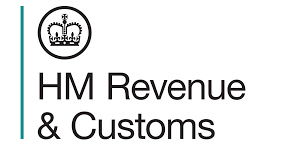HMRC SDLT: Exemption from Stamp Duty Land Tax for Transactions Following Death Explained
Exempt Transactions Following Death for SDLT
Certain property transactions that occur after a person’s death can be exempt from Stamp Duty Land Tax (SDLT). These exemptions apply when a transaction varies the disposition of the deceased’s property, provided specific conditions are met. This ensures that changes to the distribution of an estate within a set timeframe can be made without incurring additional tax liabilities.
- Transactions must occur within two years of the person’s death to qualify for exemption.
- No monetary consideration, except for the variation of another disposition, should be involved.
- Secured debts assumed do not count as consideration for these purposes.
- The exemption applies regardless of whether the estate administration is complete.
- Property distribution according to original dispositions does not affect the exemption.
“`

Read the original guidance here:
HMRC SDLT: Exemption from Stamp Duty Land Tax for Transactions Following Death Explained
Exempt Transactions Following Death for Stamp Duty Land Tax
Certain property transactions that occur after someone has died may not require payment of Stamp Duty Land Tax (SDLT). These exemptions can help simplify the process for the deceased’s estate and their beneficiaries.
Understanding Exempt Transactions
A transaction that takes place after a person’s death can be exempt from SDLT if it meets specific conditions. Here’s what you need to know about these exempt transactions:
Key Conditions for Exempt Transactions
- Timeframe: The transaction must happen within two years of the person’s death.
- No Monetary Consideration: The transaction should not involve any money or equivalent value being exchanged. The only exception is if it involves changing a previous arrangement regarding the deceased’s property.
It’s important to note that any secured debt taken on as part of the transaction does not count as the consideration mentioned above.
Types of Transactions that May Be Exempt
Exempt transactions can include a range of property transfers or variations of previous arrangements. Here are a couple of examples to illustrate:
- Example 1: A family member changes the way a property owned by the deceased is shared among heirs. This process is considered a variation of a previous disposition, so if it’s done within two years and no money changes hands, it may qualify for the exemption.
- Example 2: If the original will intended for a property to go to a specific family member, but the family members decide after the person’s death to transfer ownership to an alternative beneficiary under different terms, this can also be an exempt transaction as long as the conditions are met.
Impact of Estate Administration
Whether or not the entire estate administration process is finalised does not affect the applicable transaction’s SDLT exemption. The exemption applies to transactions at any stage of the estate management, as long as the conditions detailed above are satisfied.
Key Definitions for Clarity
Understanding some definitions can help clarify the obligations and nuances of SDLT exemptions in these cases:
- Disposition: This term refers to the way in which property or assets are allocated in a will or through intestacy laws.
- Consideration: This is typically a term to describe the payment or value exchanged in a transaction. In the context of exempt transactions, it highlights what is not included when satisfying the exemption rules.
- Administration of the Estate: This is the process of managing and settling a deceased person’s estate, including distributing assets according to a will or intestacy laws.
Legal Reference for Exemption
The legal framework that governs this exemption can be found in the legislation as specified in FA03/SCH3/PARA4. This provision outlines the specifics regarding exempt transactions following a person’s death.
It is essential for those dealing with an estate after someone passes away to be aware of these SDLT exemptions. Understanding when a transaction qualifies for these exemptions can save considerable costs and make the process more manageable.
When to Seek Expert Advice
While the above guidelines provide a helpful overview, it may be beneficial to seek advice from a qualified tax professional or estate planner. They can provide tailored guidance specific to individual situations, particularly if any complex arrangements or disputes arise concerning the deceased’s estate.
Additionally, if there is uncertainty about whether a transaction qualifies for exemption, a professional can help navigate these challenging waters to avoid potential penalties or issues with the HM Revenue and Customs (HMRC).
Summary of Key Takeaways
- Transactions following death can be exempt from SDLT if conducted within two years and involve no monetary consideration.
- Changes to the disposition of property related to the deceased may qualify for the exemption.
- The estate’s administration status does not affect the exemption eligibility.
Overall, the SDLT rules surrounding exempt transactions following death can provide financial relief when managing an estate. Awareness of the conditions and definitions ensures that the beneficiaries and executors can act correctly within the law.
Further Information
For more detailed information about SDLT exemptions and regulations, or if you have a specific query, visit the official HMRC website or consult with a professional skilled in estate management and taxation to gain a comprehensive understanding of your obligations and any exemptions that may apply to you.







